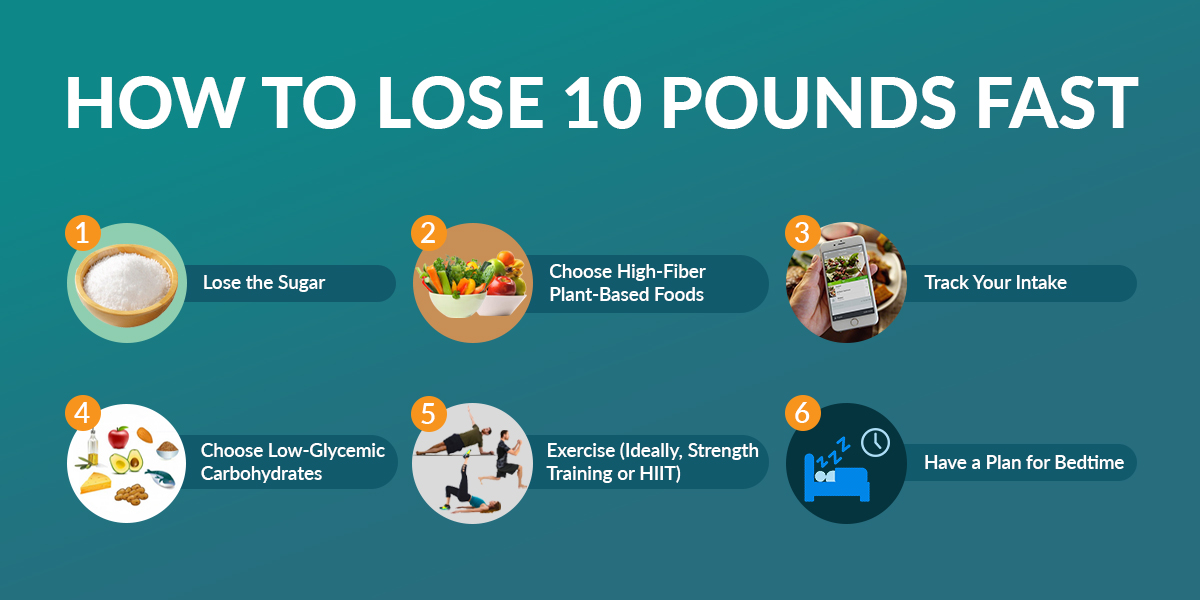Achieve your weight loss goals with these realistic ways to lose 10 pounds in 2 weeks. Discover effective strategies for creating a calorie deficit, optimizing your diet, increasing physical activity, getting sufficient sleep, and managing stress levels. Start your weight loss journey today!
If you’re looking to shed a significant amount of weight within a limited timeframe, you may be wondering if it’s even possible to realistically lose 10 pounds in just 2 weeks. With the right approach and commitment, achieving this goal is within your reach. In this article, we will explore a variety of effective and practical strategies that can assist you in your weight loss journey. From adopting a balanced and nutritious eating plan to incorporating regular exercise into your routine, these realistic ways can help you reach your goal of losing 10 pounds in 2 weeks. So, let’s delve into the details and discover how you can achieve your weight loss objectives in a sustainable and healthy manner.
Set a Realistic Goal

Determining Your Target Weight
Before embarking on any weight loss journey, it is essential to determine your target weight. Setting a specific and achievable goal helps you stay focused and motivated throughout the process. This target weight should be based on your individual needs, taking into consideration factors such as age, height, body composition, and overall health. Consulting with a healthcare professional or a registered dietitian can provide valuable guidance in determining an appropriate target weight for you.
Breaking Down the Goal into Achievable Targets
While it may be tempting to aim for rapid weight loss, it is important to set realistic and sustainable targets. Losing 10 pounds in 2 weeks may not be feasible or healthy for everyone, as it requires a significant calorie deficit and strict adherence to a structured plan. Instead, consider breaking down your weight loss goal into smaller, more achievable targets. For example, aiming to lose 1-2 pounds per week is a more realistic and manageable approach. This allows for gradual progress without putting excessive strain on your body.
Create a Calorie Deficit
Understanding Caloric Deficit
Creating a calorie deficit is at the core of any successful weight loss journey. It means consuming fewer calories than your body needs to maintain its current weight. When your body is in a calorie deficit, it will tap into stored fat reserves to meet its energy requirements, leading to weight loss over time. However, it is crucial to strike a balance and not dip too low in calories, as this can lead to nutrient deficiencies and metabolic slowdown.
Calculating Your Daily Caloric Intake
To create a calorie deficit, you first need to determine your daily caloric intake. This can be calculated using various formulas and online calculators that take into account factors such as age, gender, weight, height, and activity level. It is important to note that these calculations provide estimates, and adjustments may need to be made based on personal experience and progress. Consulting with a registered dietitian can help you determine a more accurate daily caloric intake that aligns with your specific goals.
Reducing Caloric Intake
Once you have established your target daily caloric intake, it is time to reduce your overall caloric intake to create a deficit. This can be achieved by making smart food choices and portion control. Opt for nutrient-dense foods that are low in calories but high in nutrients, such as fruits, vegetables, lean proteins, and whole grains. Avoid high-calorie foods that are low in nutritional value, such as processed snacks, sugary beverages, and fried foods. Be mindful of portion sizes and practice mindful eating to avoid overeating. It can also be beneficial to consult with a registered dietitian who can provide personalized meal plans and guidance on calorie reduction.
Optimize Your Diet

Choosing Nutrient-Dense Foods
When it comes to weight loss, the quality of your diet is just as important as the quantity. Opting for nutrient-dense foods ensures that you are providing your body with essential vitamins, minerals, and antioxidants, all while keeping your calorie intake in check. These include fruits, vegetables, whole grains, lean proteins, and healthy fats. By focusing on nutrient-dense foods, you can nourish your body and support healthy weight loss.
Prioritizing Protein and Fiber
Protein and fiber are two key nutrients that play a significant role in weight loss. Protein helps to increase satiety, reduce hunger cravings, and preserve lean muscle mass during calorie restriction. Good sources of protein include lean meats, poultry, fish, legumes, and dairy products. On the other hand, fiber adds bulk to your meals, promoting feelings of fullness and aiding in digestion. Fiber-rich foods include fruits, vegetables, whole grains, and legumes. Prioritizing both protein and fiber in your diet can help support weight loss efforts.
Avoiding Processed and Sugary Foods
Processed and sugary foods should be limited or avoided entirely when striving for weight loss. These types of foods are typically high in calories, unhealthy fats, refined sugars, and artificial additives. They offer little nutritional value and can hinder weight loss progress. Instead, focus on whole, unprocessed foods that are lower in calories and provide more nutrients per serving.
Drinking Plenty of Water
Staying hydrated is important for overall health and weight management. Drinking plenty of water can help control appetite, reduce fluid retention, and promote optimal digestion. It is recommended to drink at least 8 cups (64 ounces) of water per day, but individual needs may vary. Avoid sugary beverages and opt for water as your primary source of hydration.
Meal Planning and Portion Control
Meal planning and portion control are essential tools for achieving and maintaining weight loss. Plan your meals in advance to ensure a balanced and calorie-controlled diet. This allows you to make healthier choices and prevents impulsive decisions that may derail your progress. Additionally, practicing portion control can help you manage your calorie intake more effectively. Use smaller plates and bowls, measure your food portions, and be mindful of your hunger and fullness cues.
Increase Physical Activity

Setting Realistic Exercise Goals
Physical activity is a crucial component of any weight loss plan. It helps burn calories, improves cardiovascular health, builds muscle strength, and boosts metabolism. However, it is important to set realistic exercise goals that align with your current fitness level and overall health. Gradually increase the intensity and duration of your workouts to avoid injury and burnout. Consulting with a personal trainer can provide personalized guidance and ensure that your exercise routine is safe and effective.
Incorporating Cardiovascular Exercises
Cardiovascular exercises, also known as cardio, are activities that elevate your heart rate and help burn calories. These exercises can include activities such as walking, jogging, cycling, swimming, or dancing. Aim for at least 150 minutes of moderate-intensity cardio exercises per week, or 75 minutes of vigorous-intensity exercises. Consider incorporating cardio sessions into your daily routine to maximize calorie burn and support weight loss.
Including Strength Training
Strength training is essential for building lean muscle mass, which can increase your metabolism and help burn more calories even at rest. Include strength training exercises at least two to three times per week. Focus on working different muscle groups with exercises such as weightlifting, resistance bands, or bodyweight exercises. Consult with a personal trainer to ensure proper form and technique.
Trying High-Intensity Interval Training (HIIT)
High-Intensity Interval Training (HIIT) is a popular workout technique that involves alternating between intense bursts of exercise and short recovery periods. HIIT workouts are efficient and effective for burning calories and improving cardiovascular fitness. These workouts can be done with various exercises, such as sprints, jumping jacks, burpees, or cycling intervals. Start with shorter intervals and gradually increase the intensity as you build stamina and fitness level.
Adding NEAT Activities
Non-exercise activity thermogenesis (NEAT) refers to the energy expended through everyday activities such as walking, cleaning, gardening, or taking the stairs. Increasing your NEAT can contribute to calorie burn and weight loss. Look for opportunities to be more active throughout the day, such as taking standing breaks, pacing while on the phone, or opting for active hobbies. Every little movement counts!
Get Sufficient Sleep

Understanding the Connection between Sleep and Weight Loss
Getting sufficient sleep is not only essential for overall health and well-being but also plays a role in weight loss. Poor sleep or lack of sleep can disrupt hormonal balance, leading to increased appetite and cravings for unhealthy foods. It can also impact your energy levels and motivation to engage in physical activity. Aim for 7-9 hours of quality sleep per night to support your weight loss efforts.
Creating a Consistent Sleep Schedule
Establishing a consistent sleep schedule can help regulate your body’s internal clock and improve sleep quality. Try to go to bed and wake up at the same time every day, even on weekends. Avoid stimulating activities before bedtime, such as using electronic devices or consuming caffeine, as they can interfere with sleep. Create a calm and relaxing sleep environment by keeping your bedroom dark, quiet, and at a comfortable temperature.
Developing a Bedtime Routine
Engaging in a bedtime routine can signal your body that it is time to wind down and prepare for sleep. Establish relaxing activities before bed, such as reading a book, practicing mindfulness or meditation, taking a warm bath, or listening to soothing music. Avoid stimulating or stressful activities that may hinder sleep. Find a routine that works for you and prioritize consistent bedtime habits.
Manage Stress Levels
Recognizing the Impact of Stress on Weight
Stress can have a profound impact on our overall health, including weight management. When stressed, the body releases cortisol, a hormone that can increase appetite, particularly for high-calorie, sugary foods. Additionally, stress can lead to emotional eating as a coping mechanism. Managing stress is crucial for effective weight loss and overall well-being.
Implementing Stress-Relief Techniques
Incorporating stress-relief techniques into your daily routine can help manage stress levels and promote weight loss. These techniques can include practices such as mindfulness meditation, deep breathing exercises, yoga, or engaging in hobbies that bring joy and relaxation. Find what works for you and make it a priority to allocate time for stress management.

Prioritizing Self-Care Activities
Self-care activities play a vital role in managing stress and supporting weight loss efforts. Self-care can involve activities such as adequate rest, engaging in enjoyable hobbies, spending quality time with loved ones, and practicing self-compassion. Make time for self-care activities that help you relax, recharge, and maintain a healthy mindset throughout your weight loss journey.
Monitor Your Progress
Tracking Weight Changes
Regularly monitoring your weight progress can help you stay accountable and motivated. However, it is important to remember that weight fluctuates naturally and may not always reflect accurate progress. Use a reliable scale and weigh yourself at the same time of the day, preferably in the morning before eating or drinking. Aim to monitor your weight once a week to track trends over time and avoid getting discouraged by day-to-day fluctuations.
Keeping a Food Diary
Keeping a food diary can provide valuable insight into your eating habits, portion sizes, and overall calorie intake. Write down everything you eat and drink throughout the day, including snacks and beverages. Be honest and accurate with your entries. Reviewing your food diary can help identify potential areas for improvement and ensure you are staying within your caloric intake goals.
Using Fitness Apps and Trackers
Utilizing fitness apps and trackers can enhance your weight loss journey by providing valuable information and accountability. These apps can track your daily calorie intake, monitor exercise activities, provide meal plans, and offer progress insights. Find a reputable app or tracker that aligns with your goals and preferences, and use it as a tool to streamline your weight loss efforts.
Seek Professional Guidance
Consulting with a Registered Dietitian
Seeking guidance from a registered dietitian can be highly beneficial when embarking on a weight loss journey. A registered dietitian can provide personalized meal plans, address specific dietary needs, and offer evidence-based recommendations for optimal weight loss. They can also help monitor your progress, provide ongoing support, and ensure you are meeting your nutritional requirements while losing weight safely and effectively.
Working with a Personal Trainer
If you are new to exercise or are unsure where to start, working with a personal trainer can provide valuable guidance and expertise. A personal trainer can create a customized workout plan tailored to your individual needs and goals. They can ensure you are using proper form and technique, help you progress safely, and provide motivation and accountability throughout your fitness journey.
Avoid Crash Diets and Quick Fixes
Understanding the Dangers of Crash Diets
Crash diets and quick fixes that promise rapid weight loss may seem appealing, but they can be detrimental to your health and long-term weight loss efforts. These diets often severely restrict calories, eliminate entire food groups, or endorse the use of questionable supplements. While they may result in immediate weight loss, it is typically unsustainable, and the lost weight is often regained once normal eating patterns are resumed. Crash diets can also lead to nutrient deficiencies, metabolic slowdown, and disordered eating patterns.
Focusing on Sustainable Lifestyle Changes
Instead of seeking out quick fixes, focus on sustainable lifestyle changes that promote long-term weight loss and overall health. Embrace a balanced approach to eating that includes a variety of nutrient-dense foods in appropriate portions. Make regular physical activity an integral part of your routine and find activities you genuinely enjoy. Avoid extremes and prioritize self-care. By adopting a sustainable lifestyle, you can achieve lasting results and improve your overall well-being.
Stay Motivated and Persistent
Setting Small Milestones
Break down your weight loss journey into smaller, achievable milestones to stay motivated and celebrate your progress along the way. Set specific goals, such as losing a certain amount of weight within a defined timeframe or completing a specific exercise challenge. As you reach each milestone, take a moment to acknowledge your accomplishment and reward yourself with non-food-related treats, such as a new outfit, a spa day, or a day off from your regular routine.
Rewarding Yourself for Achievements
Rewarding yourself for achievements can provide an extra boost of motivation on your weight loss journey. Rewards can act as an incentive for sticking to healthy habits and reaching your goals. However, it is important to choose rewards that do not hinder your progress, such as indulging in unhealthy foods. Instead, opt for rewards that align with your health and wellness goals, such as a massage, a new workout gear, or a weekend getaway.
Finding Support and Accountability
Seeking support and accountability from others can make a significant difference in your weight loss journey. Surround yourself with a supportive network of friends, family, or online communities that share similar goals and can provide encouragement and motivation. Consider joining a weight loss support group or working with a weight loss coach to hold yourself accountable and stay on track.
In conclusion, achieving weight loss in a healthy and sustainable manner requires a comprehensive approach that considers various aspects of your lifestyle. By setting realistic goals, creating a calorie deficit, optimizing your diet, increasing physical activity, getting sufficient sleep, managing stress levels, monitoring progress, seeking professional guidance, and avoiding crash diets and quick fixes, you can embark on a successful weight loss journey. Stay motivated and persistent, and remember that meaningful, lasting changes take time. With the right mindset and commitment, you can achieve your desired weight loss goals and improve your overall well-being.
